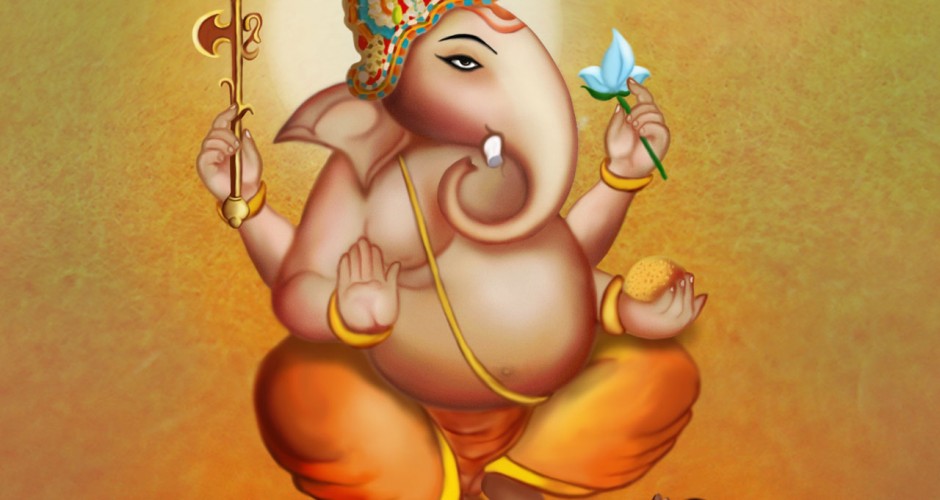Out of all the deities in the Hindu pantheon Ganesh, is one of the most popular. He is the ‘Remover of Obstacles’, and ‘Leader of the Celestials’. Each aspect of the image of a Hindu deity contains a meaning or message. Here we use the image of Ganesh to demonstrate this, and relate it to leadership and overcoming obstacles.
Elephant trunk
An elephant’s trunk is not used to make noise very often. But when it does – the noise is clear, loud and glorious. In the same way it is a quality of a good leader to not waste words unnecessarily but to ensure that whatever is said should be clear, well thought out and profound.
One broken tusk, one large tusk
Ganesh is shown as having one broken tusk, and one full tusk. It is said that the short tusk represents the intellect, whereas the full tusk represents sraddha (faith). The intellect is limited. We should use it to full capacity – but there is only so far it can take us. Beyond this point it is our faith that we have to rely on. Faith does not necessarily imply a religious belief. It is a certain conviction of our heart, a conviction in the rightness of a cause, to go beyond our usual set boundaries. This is particularly relevant when undertaking new endeavours, hence the worship of Ganesh at this time in particular.
Large ears
Large ears relate to listening. Listening attentively to all that is going on around us, as well as to the people in our lives, is an important quality. One of the main problems in interpersonal relations is that we don’t truly listen. Also, we don’t listen to nature, which if we are perceptive is sending us messages all the time.
Mouse as companion
There are several meanings traditionally associated with Ganesh’s strange choice of companion. Two of them are as follows:
1) Equality of company. Ganesh befriends all, including the person who is from a very different species. People who are truly noble understand that we may be able to draw our friends, advisors or colleagues from all walks of life. There is a lesson to learn from everyone, no matter how lowly they may seem, and the Supreme soul is present in all beings, high and low.
2) The mouse is sometimes compared to our thoughts, because our thoughts (just like a mouse) are hard to control, and always on the move from one place to another. It is the ability to control our thoughts, keeping them at one point, which is being symbolised.
One foot in on the floor, one foot raised
This represents the Vedic teaching that an individual should live life with “one foot in the material world and one foot beyond the world”. That means that our worldly affairs should be given due care and attention, but that we should also cultivate a spiritual dimension to our lives which is removed from the ups and downs of everyday life. It is unbalanced living if we set all our attention to this fleeting, impermanent world, without learning to live in deeper harmony with the eternal truths of existence. It is also impartial living is we just pursue transendental spirituality with no care of worldly duties and needs. A balance must be struck where spirituality enriches rather than hinders worldly pursuits. Ganesh, to the Hindu mind, symbolises this balance, where spirituality and worldly endeavours are beautifully harmonised.
Contemplation/Meditation on an Image
The imagery within Hinduism is very profound and contains various layers of meanings. The importance in knowing the meanings behind these is related to our subconscious mind. When we know the meanings, they become stored in our memories. When we concentrate on the image, even though we are not consciously remembering all of the meanings contained within, the subconscious mind is reinforcing these messages into our character. It is in the same way that we pick up so much from our surroundings, without consciously trying to. This is a subconscious process. The action of the subconscious mind while praying and meditating is explained in depth in various scriptures, particularly the Patanjali’s Yogasutras. Understood like this, concentration on an image such as that of Ganesh becomes an important and meaningful part of our spiritual practice. Such worship is like stream of clear water purifying our mind and consciousness.
































1 Comment